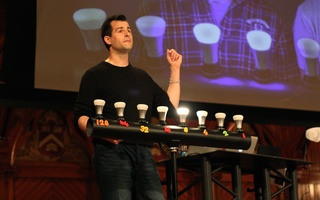In 1994 Aiken designed a similar detection system for Berkeley called Measure of Software Similarity (MOSS).
The Internet service, which allows instructors to submit a set of programs for comparison, was made public two and a half years ago. Since then, more than 1,200 users worldwide--representing both individual instructors and entire departments--have subscribed to the free service.
"The computer sciences have had this problem for a long time," says Aiken, who was inspired to develop MOSS after finding that plagiarism tools available at that time were inadequate to keep up with common code-copying.
Like Harvard's program, the MOSS program catches similarities in submitted files and leaves the final plagiarism analysis up to the instructor.
Aiken says that MOSS is used routinely in Berkeley's introductory as well as junior and senior computer science courses.
Although not all computer science professors use the system, it is currently in use in five courses with 200 to 300 students each.
Aiken says the program allows professors to focus on teaching rather than worrying about cases of academic dishonesty.
But according to Aiken, cheating still persists.
Read more in News
Gore, Bush Seal Nominations With Huge WinsRecommended Articles
-
Cut And Paste, Catch CheatersThe Internet has become the answer to cheaters’ prayers, diminishing any chance that professors might have to identify plagiarized source
-
Fighting Plagiarism, Schools Go High-TechWhat makes Kaavya Viswanathan ’08 unusual is not the fact that she plagiarized passages from another author’s work—it’s the fact
-
Pilot Program Takes Aim at PlagiarismInstructors in one sociology course will use anti-plagiarism software to catch copycats in their class, as part of a new
-
Professors Ask Computers to Catch CheatingProfessors are more widely employing algorithms, from decades-old codes to ones created by instructors, as an automated means to detect plagiarism in student assignments.
-
 Under CS50 Policy, Accused Students Likely Left in Dark
Under CS50 Policy, Accused Students Likely Left in Dark













